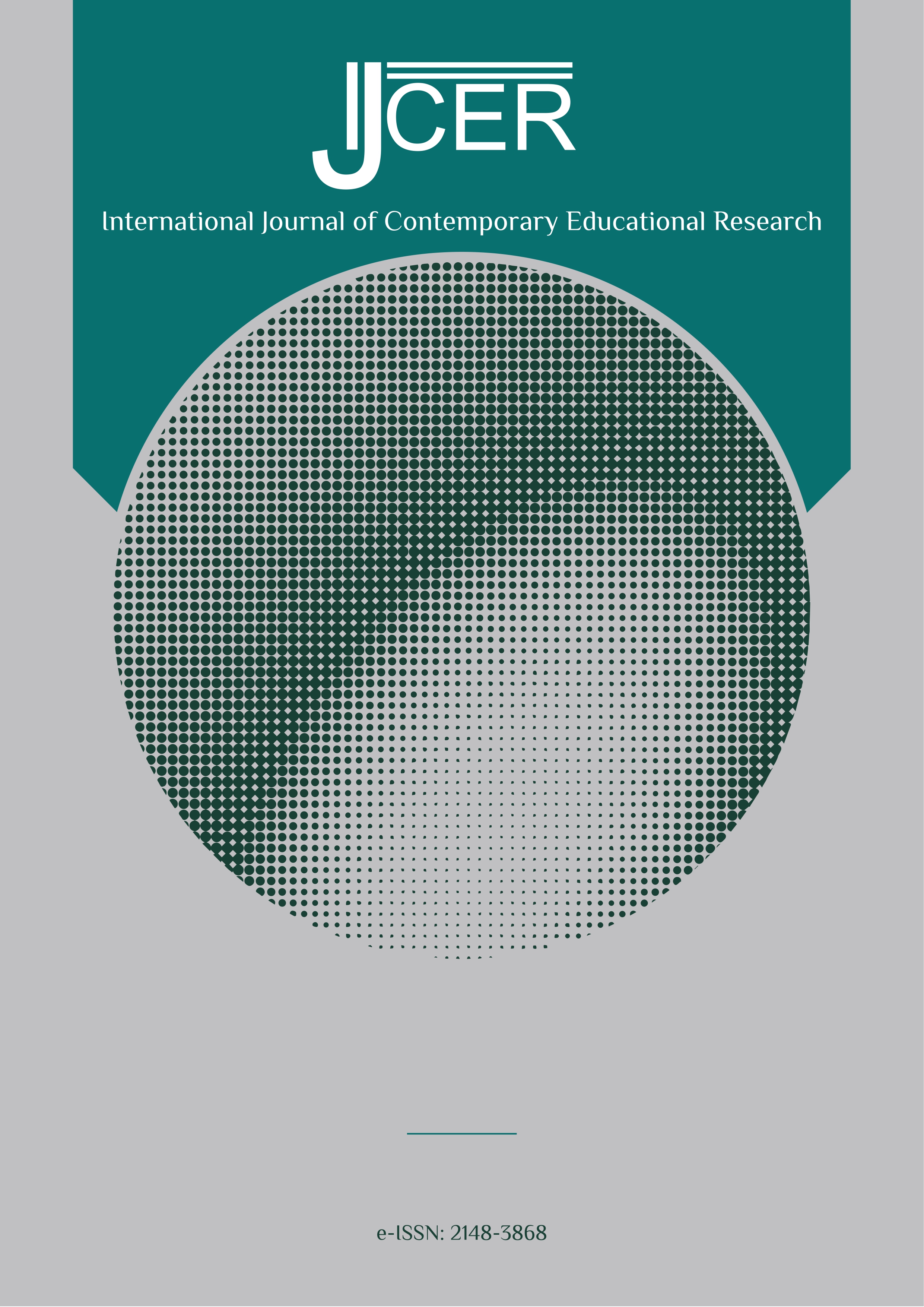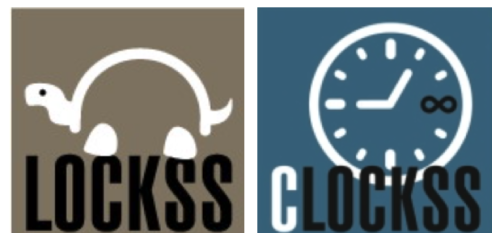Response to Intervention: A Bibliometric Mapping
DOI:
https://doi.org/10.52380/ijcer.2025.12.2.760Keywords:
Response to Intervention, Learning Disabilities, Bibliometric Study, Special EducationAbstract
This study aims to present a bibliometric analysis of international research on the response to intervention (RTI) approach. An analysis was conducted using the Web of Science database focusing on the period between 1997 and 2023. At the end of this analysis, 477 records that met the search criteria were identified.
Initially, a performance analysis was carried out to assess the publication output of authors, institutions, countries, and other contributors. Subsequently, a science mapping analysis was conducted to uncover the structure and dynamics of research related to the RTI approach. The main findings of the research are as follows: (1) Research on RTI has been an emerging field that has grown exponentially since the 2000s, but there has been a decline in the number of studies in recent years; (2) Research in this area is predominantly produced by a few institutions and a cadre of scholars in the United States; (3) There is evidence of research collaboration among scholars in this area, but collaborative networks are mostly established within the US or among scientists in a few countries; (4) The trends in the RTI literature have changed over the past 27 years. This study provides beneficial information on the current state of RTI research, helping to recognize this research's strengths and gaps in growth, development, themes, impact, and scope.
References
Abbott, M., & Wills, H P. (2012). Improving the upside-down response-to-intervention triangle with a systematic, effective elementary school reading team. Taylor & Francis, 56(1), 37-46. https://doi.org/10.1080/1045988x.2011.555793 DOI: https://doi.org/10.1080/1045988X.2011.555793
Alahmari, A. (2019). A Review and synthesis of the Response to Intervention (RtI) literature: teachers' implementations and perceptions. International Journal of Special Education, 33(4), 894-909. https://doi.org/10.7176/JEP/10-15-02 DOI: https://doi.org/10.7176/JEP/10-15-02
Allsopp, D. H., McHatton, P. A., & Farmer, J. L. (2010). Technology, mathematics PS/RTI, and students with LD: What do we know, what have we tried, and what can we do to improve outcomes now and in the future?. Learning Disability Quarterly, 33(4), 273-288. https://doi.org/10.1177/0731948710033004 DOI: https://doi.org/10.1177/073194871003300405
Andrés, A. (2009). Measuring academic research, how to undertake a bibliometric study. Oxford: Chandos Publishing (CP).
Aria, M., & Cuccurullo, C. (2017). Bibliometrix: An R-tool for comprehensive science mapping analysis. Journal of Informetrics, 11(4), 959-975. https://doi.org/10.1016/j.joi.2017.08.007 DOI: https://doi.org/10.1016/j.joi.2017.08.007
Batsche, G. M., Elliott, J., Graden, J. L., Grimes, J., Kovaleski, J. F., Prasse, D., ... & Tilly, W. D. (2005). Response to intervention: Policy considerations and implementation. VA: National Association of State Directors of Special Education.
Berkeley, S., Bender, W. N., Gregg, L. P., & Saunders, L. (2009). Implementation of response to intervention: A snapshot of progress. Journal of Learning Disabilities, 42(1), 85–95. https://doi.org/10.1177/0022219408326214 DOI: https://doi.org/10.1177/0022219408326214
Björn, P. M., Aro, M. T., Koponen, T. K., Fuchs, L. S., & Fuchs, D. H. (2018). Response-to-intervention in Finland and the United States: Mathematics learning support as an example. Frontiers in Psychology, 9, 1–10. https://doi.org/10.3389/fpsyg.2018.00800 DOI: https://doi.org/10.3389/fpsyg.2018.00800
Burns, M. K., Appleton, J. J., & Stehouwer, J. D. (2005). Meta-analytic review of responsiveness-to-intervention research: Examining field-based and research-implemented models. Journal of Psychoeducational Assessment, 23(4), 381-394. https://doi.org/10.1177/073428290502300406 DOI: https://doi.org/10.1177/073428290502300406
Compton, D. L., Fuchs, D., Fuchs, L. S., & Bryant, J. D. (2006). Selecting at-risk readers in first grade for early intervention: A two-year longitudinal study of decision rules and procedures. Journal of Educational Psychology, 98(2), 394–409. https://doi.org/10.1037/0022-0663.98.2.394 DOI: https://doi.org/10.1037/0022-0663.98.2.394
Deno, S. L. (2003). Developments in curriculum-based measurement. The Journal of Special Education, 37(3), 184-192. https://doi.org/10.1177/00224669030370030801 DOI: https://doi.org/10.1177/00224669030370030801
Ehren, B. J., & Nelson, N. W. (2005). The responsiveness to intervention approach and language impairment. Topics in Language Disorders, 25(2), 120-131. https://doi.org/10.1097/00011363-200504000-00005 DOI: https://doi.org/10.1097/00011363-200504000-00005
Fletcher, J. M., Lyon, G. R., Fuchs, L. S., & Barnes, M. A. (2007). Learning disabilities: From identification to intervention. Guilford Press.
Fletcher, J Μ., & Vaughn, S. (2009, March 23). Response to intervention: Preventing and remediating academic difficulties. Wiley-Blackwell, 3(1), 30-37. https://doi.org/10.1111/j.1750-8606.2008.00072.x DOI: https://doi.org/10.1111/j.1750-8606.2008.00072.x
Fuchs, L. S., & Fuchs, D. (1998). Treatment validity: A unifying concept for reconceptualizing the identification of learning disabilities. Learning Disabilities Research and Practice, 13, 204–219.
Fuchs, D., & Fuchs, L. S. (2006). Introduction to response to intervention: What, why, and how valid is it? Reading Research Quarterly, 41(1), 93-99. https://doi.org/10.1598/RRQ.41.1.4 DOI: https://doi.org/10.1598/RRQ.41.1.4
Fuchs, L. S., & Fuchs, D. (2005). Using curriculum-based measurement to improve student achievement: Review of research. Psychology in the Schools, 42(8), 795-819. https://doi.org/10.1002/pits.20113
Fuchs, D., Fuchs, L. S., & Stecker, P. M. (2010). The “blurring” of special education in a new continuum of general education placements and services. Exceptional Children, 76(3), 301-323. https://doi.org/10.1177/001440291007600304 DOI: https://doi.org/10.1177/001440291007600304
Fuchs, D., Mock, D., Morgan, P. L., & Young, C. L. (2003). Responsiveness-to-intervention: Definitions, evidence, and implications for the learning disabilities construct. Learning Disabilities Research and Practice, 18(3), 151–171. https://doi.org/10.1111/1540-5826.00072 DOI: https://doi.org/10.1111/1540-5826.00072
Gischlar, K. L., Keller-Margulis, M., & Faith, E. L. (2019). Ten years of response to intervention: Trends in the school psychology literature. Contemporary School Psychology, 23(3), 201-210. https://doi.org/10.1007/s40688-018-0179-9 DOI: https://doi.org/10.1007/s40688-018-0179-9
Gresham, F. M. (2002). Responsiveness to intervention: An alternative approach to the identification of learning disabilities. In R. Bradley, L. Danielson, & D. P. Hallahan (Eds.), Identification of learning disabilities: Response to treatment (pp. 467-519). NJ: Erlbaum.
Grether, S. M., & Sickman, L. S. (2008). AAC and RTI: Building classroom-based strategies for every child in the classroom. Seminars in Speech and Language, 29(2), 155–163. https://doi.org/10.1055/s-2008-1079129 DOI: https://doi.org/10.1055/s-2008-1079129
Hughes, C., & Dexter, D. D. (2011). Response to intervention: A research-based summary. Taylor & Francis, 50(1), 4-11. https://doi.org/10.1080/00405841.2011.534909 DOI: https://doi.org/10.1080/00405841.2011.534909
Jimerson, S. R., Burns, M. K., & VanDerHeyden, A. M. (2007). Handbook of response to intervention. NY: Springer. DOI: https://doi.org/10.1007/978-0-387-49053-3
Leung, E. (2021). Examining learning disabilities in schools through an intersectional and equitable lens. Learning disabilities-neurobiology, assessment, clinical features and treatments. IntechOpen. https://doi.org/10.5772/intechopen.99572 DOI: https://doi.org/10.5772/intechopen.99572
Lonigan, C. J., & Phillips, B. M. (2016). Response to instruction in preschool: Results of two randomized studies with children at significant risk of reading difficulties. Journal of Educational Psychology, 108(1), 114-129. https://doi.org/10.1037/edu0000054 DOI: https://doi.org/10.1037/edu0000054
Marston, D. (2005). Tiers of intervention in responsiveness to intervention: Prevention outcomes and learning disabilities identification patterns. Journal of Learning Disabilities, 38(6), 539-544. https://doi.org/10.1177/00222194050380061001 DOI: https://doi.org/10.1177/00222194050380061001
Merigó, J. M., & Yang, J. B. (2017). Accounting research: A bibliometric analysis. Australian Accounting Review, 27(1), 71-100. https://doi.org/10.1111/auar.12109 DOI: https://doi.org/10.1111/auar.12109
Mongeon, P., & Paul-Hus, A. (2016). The journal coverage of Web of Science and Scopus: A comparative analysis. Scientometrics, 106(1), 213-228. https://doi.org/10.1007/s11192-015-1765-5 DOI: https://doi.org/10.1007/s11192-015-1765-5
Murakami‐Ramalho, E., & Wilcox, K. A. (2012). Response to intervention implementation: A successful principal's approach. Journal of Educational Administration, 50(4), 483-500https://doi.org/10.1108/09578231211238602 DOI: https://doi.org/10.1108/09578231211238602
Norris, M., & Oppenheim, C. (2007). Comparing alternatives to the Web of Science for coverage of the social sciences’ literature. Journal of Informetrics, 1(2), 161-169. https://doi.org/10.1016/j.joi.2006.12.001 DOI: https://doi.org/10.1016/j.joi.2006.12.001
Pretti-Frontczak, K., Carta, J., Dropkin, E., Fox, L., Grisham-Brown, J., Edwards, C., & Sandall, S. (2014). Frameworks for response to intervention in early childhood: Description and implications. Communication Disorders Quarterly, 35, 108-119. https://doi.org/10.1177/1525740113514111 DOI: https://doi.org/10.1177/1525740113514111
Prieto-Jiménez, E., López-Catalán, L., López-Catalán, B., & Domínguez-Fernández, G. (2021). Sustainable development goals and education: A bibliometric mapping analysis. Sustainability, 13(4), 2126. https://doi.org/10.3390/su13042126 DOI: https://doi.org/10.3390/su13042126
Reynolds, C. R., & Shaywitz, S. E. (2009). Response to Intervention: Ready or not? Or, from wait-to-fail to watch-them-fail. School Psychology Quarterly, 24(2), 130–145. https://doi.org/10.1037/a0016158 DOI: https://doi.org/10.1037/a0016158
Roemer, R. C., & Borchardt, R. (2015). Meaningful metrics: A 21st century librarian’s guide to bibliometrics, altmetrics, and research impact. IL: Association of College and Research Libraries.
Scanlon, D. M., Gelzheiser, L. M., Vellutino, F. R., Schatschneider, C., & Sweeney, J. M. (2008). Reducing the incidence of early reading difficulties: Professional development for classroom teachers versus direct interventions for children. Learning and Individual Differences, 18(3), 346-359. https://doi.org/10.1016/j.lindif.2008.05.002 DOI: https://doi.org/10.1016/j.lindif.2008.05.002
Shinn, M. (2008). Best practices in using curriculum-based measurement in a problem-solving model. In A. Thomas & J. Grimes (Eds.), Best practices in school psychology V (pp. 243-262). MD: National Association of School Psychologists.
Speece, D. L., & Case, L. P. (2001). Classification in context: An alternative approach to identifying early reading disabilities. Journal of Educational Psychology, 93(4), 735–749. https://doi.org/10.1037/0022-0663.93.4.735 DOI: https://doi.org/10.1037//0022-0663.93.4.735
Stecker, P. M., Fuchs, L. S., & Fuchs, D. (2005). Using curriculum-based measurement to improve student achievement: Review of research. Psychology in the Schools, 42, 795–819. https://doi.org/10.1002/pits.20113 DOI: https://doi.org/10.1002/pits.20113
Stuart, S., Rinaldi, C., & Higgins-Averill, O. (2011). Agents of change: Voices of teachers on response to intervention. International Journal of Whole Schooling, 7(2), 53-73. https://files.eric.ed.gov/fulltext/EJ939060.pdf
Swanson, E., Stevens, E. A., Scammacca, N. K., Capin, P., Stewart, A. A., & Austin, C. R. (2017). The impact of tier 1 reading instruction on reading outcomes for students in grades 4–12: A meta-analysis. Reading and Writing, 30, 1639-1665. https://doi.org/10.1007/s11145-017-9743-3 DOI: https://doi.org/10.1007/s11145-017-9743-3
Torgesen, J. K., Wagner, R. K., Rashotte, C. A., Rose, E., Lindamood, P., & Conway, T. (1999). Preventing reading failure in young children with phonological processing disabilities: Group and individual responses to instruction. Journal of Educational Psychology, 91(4), 579–593. https://doi.org/10.1037/0022-0663.91.4.579 DOI: https://doi.org/10.1037//0022-0663.91.4.579
Tran, L., Sanchez, T., Arellano, B., & Lee Swanson, H. (2011). A meta-analysis of the RTI literature for children at risk for reading disabilities. Journal of Learning Disabilities, 44(3), 283-295. https://doi.org/10.1177/0022219410378447 DOI: https://doi.org/10.1177/0022219410378447
Vanderstraeten, R., Vandermoere, F., & Hermans, M. (2016). Scholarly communication in AERA journals, 1931 to 2014. Review of Research in Education, 40(1), 38–61. https://doi.org/10.3102/0091732X16678836. DOI: https://doi.org/10.3102/0091732X16678836
Vaughn, S., & Fuchs, L. S. (2003). Redefining learning disabilities as inadequate response to instruction: The promise and potential problems. Learning Disabilities Research & Practice, 18(3), 137-146. https://doi.org/10.1111/1540-5826.00070 DOI: https://doi.org/10.1111/1540-5826.00070
Vaughn, S., Linan-Thompson, S., & Hickman, P. (2003). Response to instruction as a means of identifying students with reading/learning disabilities. Exceptional Children, 69(4), 391–409. https://doi.org/10.1177/001440290306900401 DOI: https://doi.org/10.1177/001440290306900401
Vaughn, S., & Fletcher, J. M. (2012). Response to intervention with secondary school students with reading difficulties. Journal of Learning Disabilities, 45(3), 244-256. https://doi.org/10.1177/0022219412442157 DOI: https://doi.org/10.1177/0022219412442157
Wanzek, J., & Vaughn, S. (2011). Is a three-tier reading intervention model associated with reduced placement in special education? Remedial and Special Education, 32(2), 167–175. https://doi.org/10.1177/0741932510361267 DOI: https://doi.org/10.1177/0741932510361267
Wright, P. W., & Wright, P. D. (2007). Special education law. VA: Harbor House Law. DOI: https://doi.org/10.1680/clh.2007.1.821
Zupic, I., & Čater, T. (2015). Bibliometric methods in management and organization. Organizational Research Methods, 18(3), 429-472. https://doi.org/10.1177/1094428114562629 DOI: https://doi.org/10.1177/1094428114562629
Downloads
Published
How to Cite
Issue
Section
License
Copyright (c) 2025 Arzu Doğanay Bilgi, Eylem Dayı, Çetin Toraman

This work is licensed under a Creative Commons Attribution-NonCommercial 4.0 International License.




